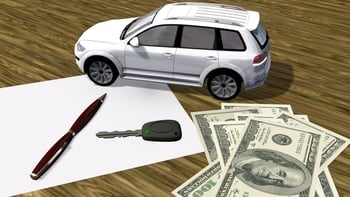 This is the first of nine articles in our Blog Series Is Leasing Really Fleecing?
This is the first of nine articles in our Blog Series Is Leasing Really Fleecing?
One of the main problems with leases is that most consumers do not really understand how leases work. Many lawyers do not really understand lease documents; I have had more than a couple calls from attorneys who were trying to understand various aspects of their car lease. And, as we will explore in a future article in this series, the complexity of lease agreements makes it much easier for a dealership to commit auto dealer fraud.
At its simplest level, a lease is a written contract under which a car dealership permits a consumer to use a motor vehicle over a set period of time. The consumer does not own the car; the owner is the leasing company to whom the dealership assigns the lease. The consumer does not build up any equity in the car. At the end of the lease, the consumer returns the car, and there is no credit or allowance that can be used to help buy or lease a new car.
The consumer’s right to use the car under a lease is not unlimited. Typically, the consumer has the right to drive a certain number of miles per year (typically 12,000 or 15,000). If the consumer exceeds the mileage limitation, she must pay extra for the excess mileage. But, if the car is driven fewer miles, no credit or refund is given. The consumer also must return the vehicle in good condition at the end of the lease, with only reasonable wear and tear permitted. If the car is returned with excessive wear such as a scratched fender or torn seats), the consumer will be charged the cost of repairs.
In return for the right to use the car, the consumer makes payments. There is usually an initial payment that typically includes the first month’s lease payment, taxes, registration, and other fees. Monthly payments are then made throughout the term of the lease. Some leases also require a payment to be made at the end of the lease. These charges will be discussed in detail in an upcoming article.
Several different factors determine the amount of the monthly payment. These factors are not clearly broken down for the consumer in the lease, which can make it easy for a dealership to trick a consumer into overpaying. The main factors, however, are the expected depreciation of the car and interest.
The depreciation factor can be determined easily enough from the lease document. The lease states the Capital Cost of the vehicle – this is equivalent to the purchase price plus various taxes and fees that are often included. The lease also states the Residual Value of the vehicle, which is the amount that the lease assumes the car will be worth at the end of the lease. The difference between the Capital Cost and the Residual Value is the amount that the car is expected to decline in value over the course of the lease. So, if a car has an adjusted price, or Capital Cost, of $30,000 and a Residual Value of $15,000, then the amount of depreciation over a typical 36-month lease would be $15,000. This depreciation is spread out over the lease term and will constitute the bulk of the monthly lease payment.
A consumer can reduce the amount of the lease payment by increasing their initial cash payment in order to reduce the Capital Cost. So, in the example above, if a consumer were to pay an extra $3,000 at the beginning of the lease, the Adjusted Capital Cost would be $27,000. Instead of $30,000. The Residual Value of the vehicle would remain the same, but the amount of depreciation that would factor into the lease payments would be reduced by the $3,000, so only $12,000 would have to be paid over the course of the lease. Many of the advertisements that you see on television offering very low lease payments involve deals where a very significant Capital Cost reduction payment is required at the beginning of the lease.
Reducing the Capital Cost will also result in lower interest charges in the lease calculation. We will discuss how interest charges are included in a lease in our next article.
If you are on our mailing list, you will receive a link to our next installment of this blog every week. Or, if you want to catch new installments as soon as they are available on our blog, you can keep posted on updates by liking us on Facebook.
Series Installments: The links below will go live as each new article is posted.
Part One: How Leases Work
Part Two: Do Leases Include Interest Charges?
Part Three: Understanding End of Lease Charges
Part Four: Leasing Games That Dealers Play
Part Five: The Cost of Leasing vs. Owning
Part Six: Leasing Pitfalls
Part Seven: Terminating a Lease Early
Part Eight: Is It Ever Advantageous to Lease?
Part Nine: Conclusion: Is Leasing Fleecing?
